Content has been at the core of business strategies since website creation and management. So, we do not need to remind you that a content management system (CMS) enables website content development content and management in a centralized manner.
In this modern market scenario where every enterprise looks for efficiency and scalability, a CMS lets you create, manage, and optimize your customer’s digital experience.
Headless CMS market to reach $1,62 Billion by 2027 and is expected to grow at a CAGR of 22.6% from 2020 to 2027. – BusinessWire
Most businesses have used traditional CMS since the early days of web development. With a dynamic market, companies now require more flexibility and scalability, which headless CMS provides.
With modern customers increasingly completing their purchasing journey via multiple touchpoints, headless commerce has become the main in every board meeting.
The current state of the CMS market and predictions
Content management is inseparable from the internet.
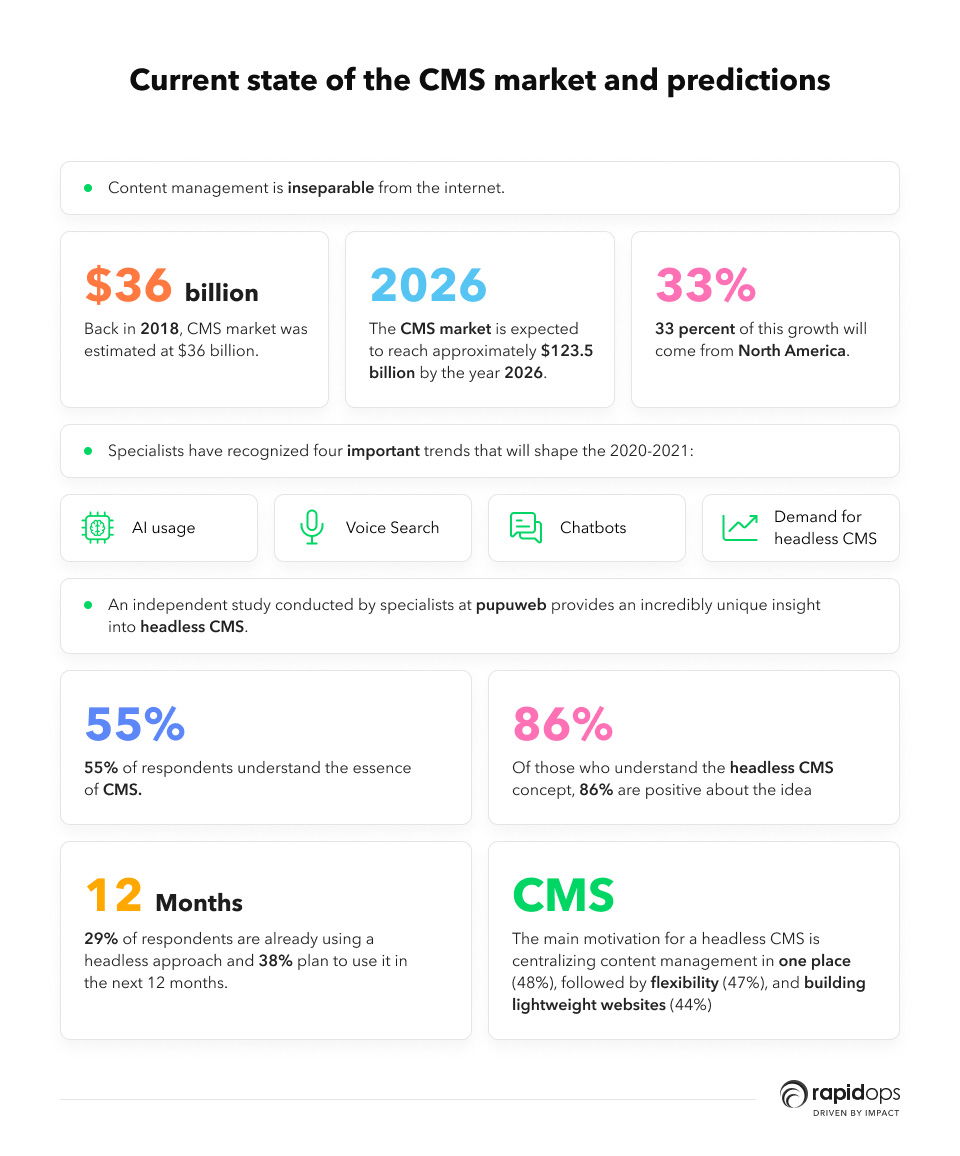
Headless Architecture: Removing Backend Restraints
In any legacy CMS platform, the front-end and back-end systems are tightly coupled together. Whereas in a headless CMS, the back-end repository is decoupled from the front-end delivery layer.
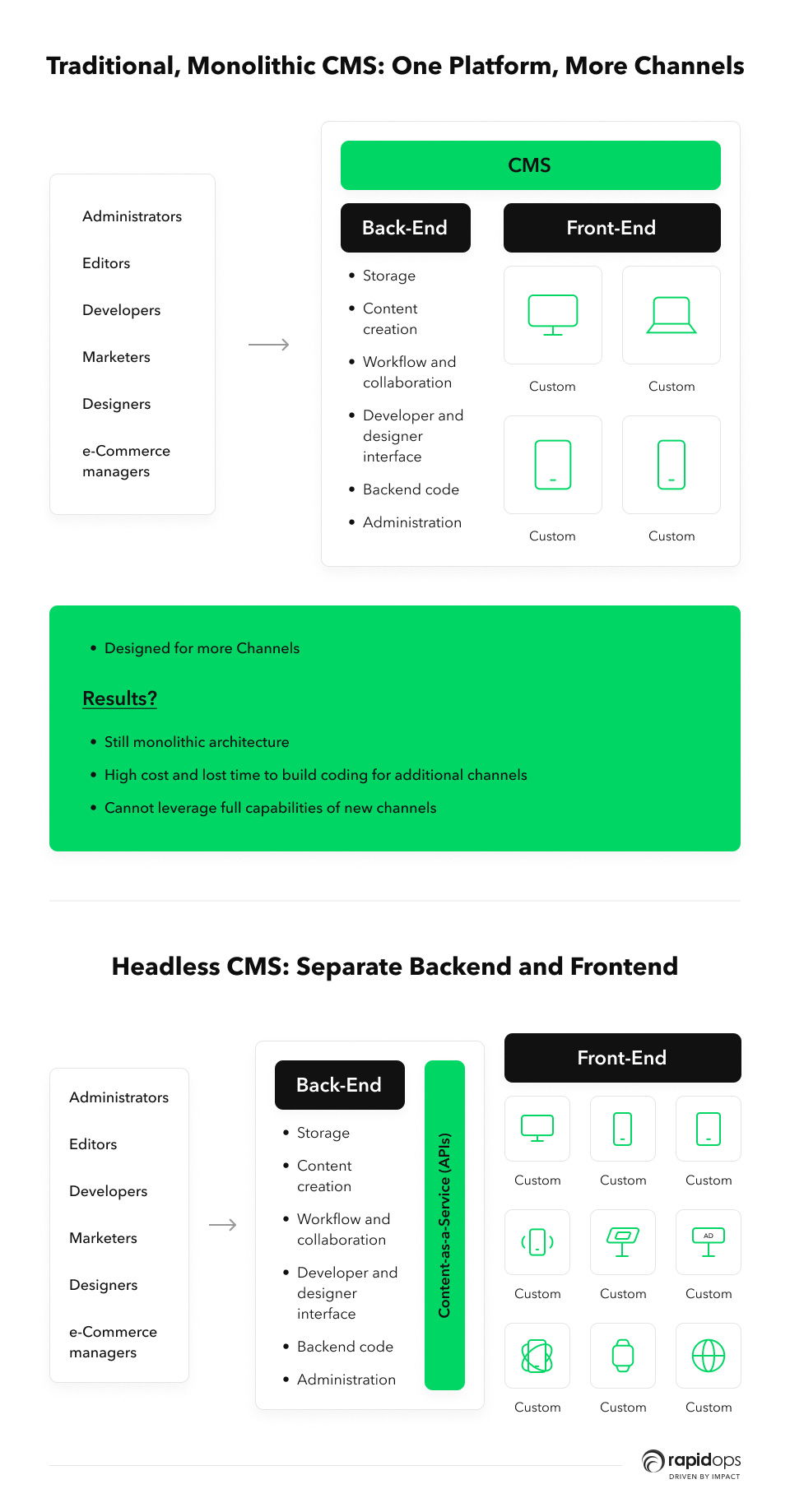
This way, teams can freely create, store, manage, and edit content and connect with any front-end channel via APIs. The dependencies become null, and developers can freely optimize the front-end experience for customers with the language of their choice and precise optimizations for front-ends.
If your business needs something traditional, such as a website or a mobile app, or channels like VR or smartwatches, headless CMS will ensure the core data is readily deployable.
Guide for implementing a headless content management system
C-level executives are often on the lookout for implementing promising technologies, developing strategies, and finding beneficial solutions to pre-existing business issues. Business owners and decision-makers often leave with specific questions with such an incredible buzz around headless CMS.
- How do I know if Headless is ‘the’ choice for my company?
- What is the best time to go headless?
- What else matters in headless implementation?
Today, we will help you understand headless CMS and its benefits to your organization. We will also simplify the implementation and selection of tools and show some business use cases of headless CMS. These are the questions that haunt modern business leaders. Why? For that, we must understand what headless CMS is and its benefits.
What is headless CMS?
So, let’s start with the basics. What is a headless CMS? As Wikipedia explains, a headless CMS is a back-end-only content management system that allows API access to content from its repository. The content is accessible on any device without requiring a built-in front end.
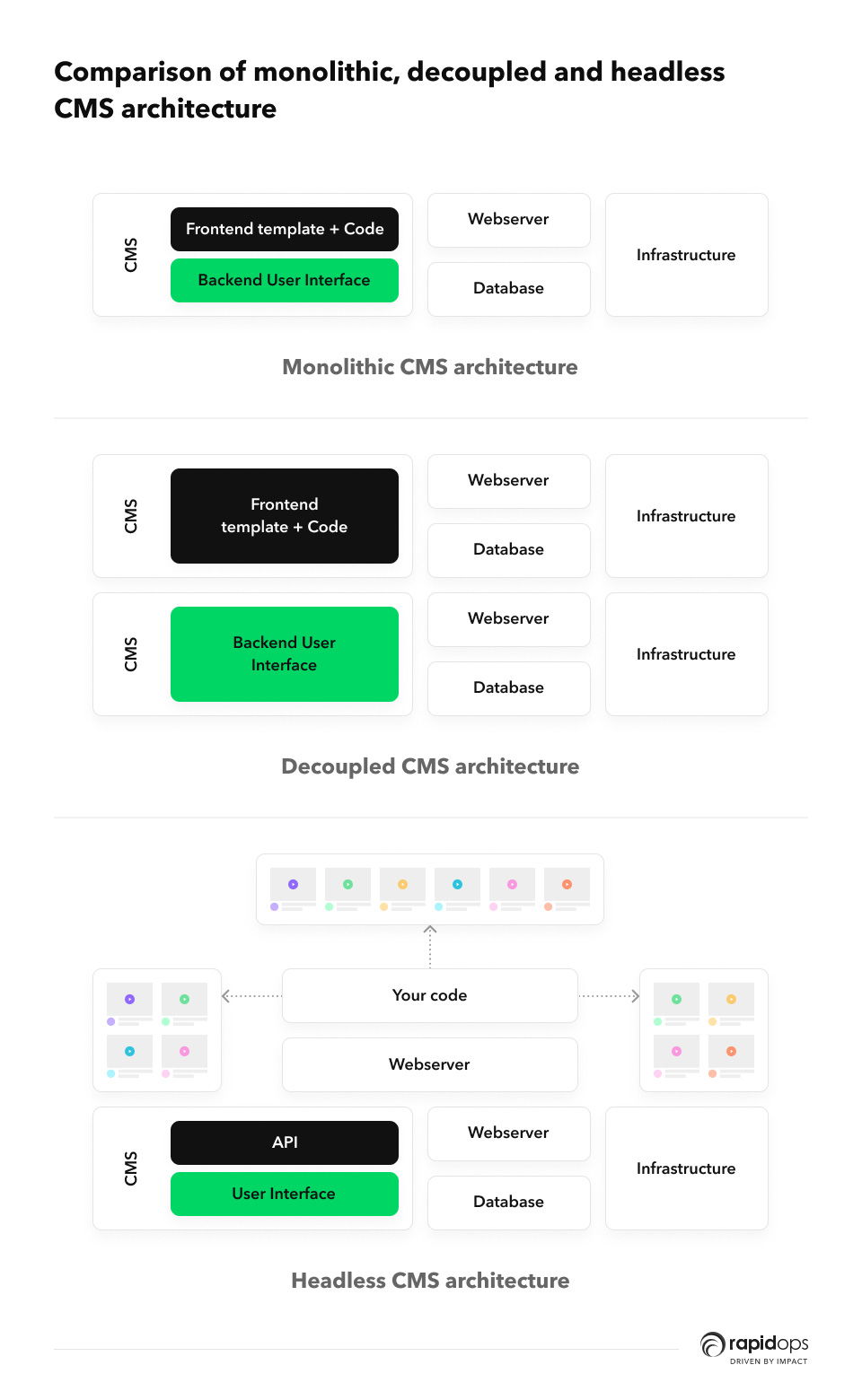
Businesses can involve multiple heads in the same back end by decoupling or detaching the head (content) from the body. Business owners can also enjoy scalable multi-channel commerce with all heads now synchronized with sales and marketing channels.
What is the difference between traditional and headless CMS?
Traditional CMS tries to manage both the content and the front end. Headless CMS manages the content after the initial interaction, such as creation and editing. An application programming interface (API) handles the publishing.
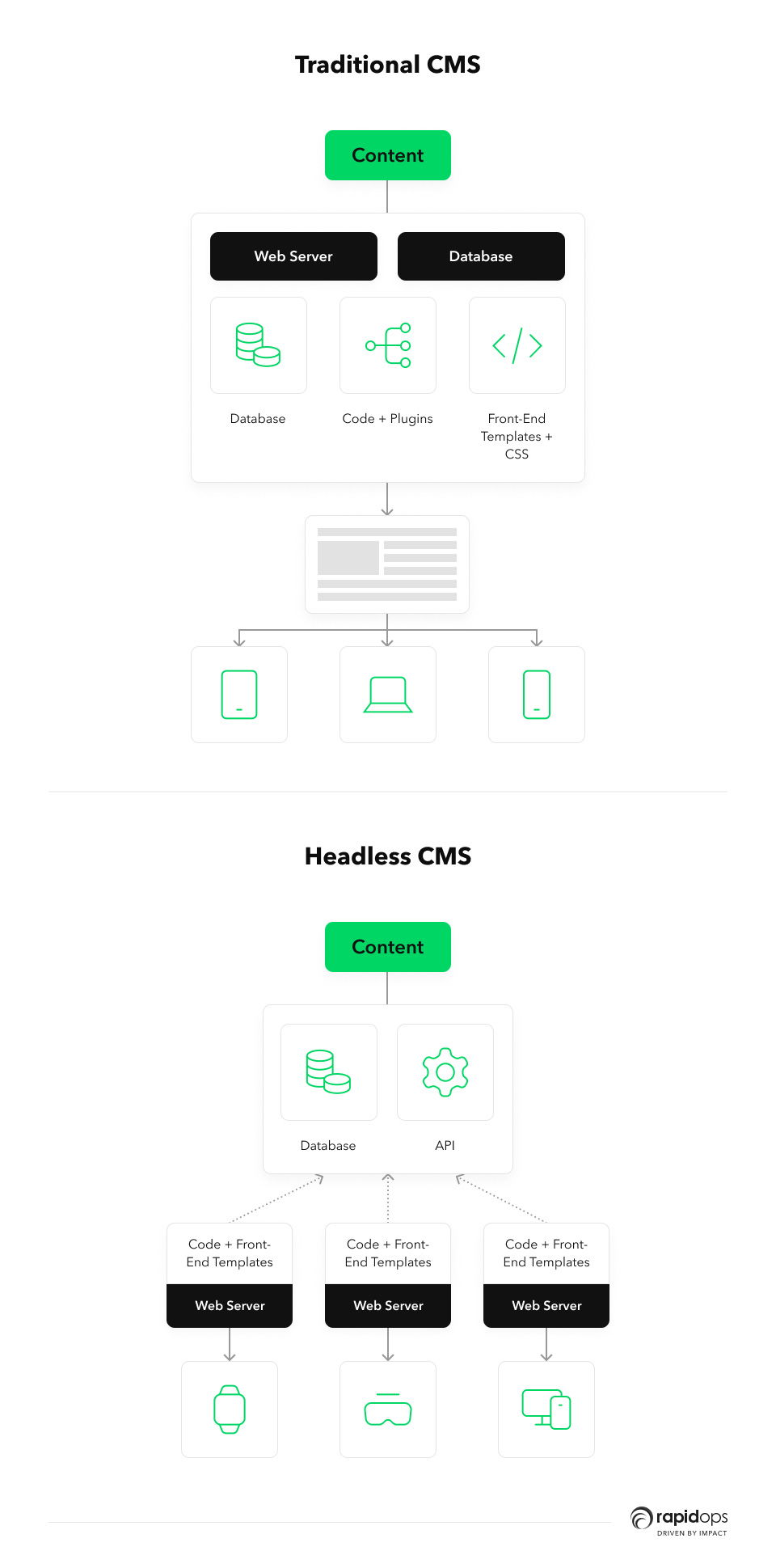
Talking about traditional CMS, the content management system and the front-end website are built on monumental architecture. The conventional CMS serves the needs of the content author, developer, and marketer.
The same technology will create the front end if the content management system is developed on the .NET framework. All other integrations and functionalities will have a stiff reliance, hence creating a massive codebase.
Decoupled CMSs removed this interdependence by separating the front-end website from the CMS back-office and content repository. The massive architecture takes a back seat in a headless CMS, as the CMS and related integrations are microservices.
Even with microservice architecture, businesses still require the services of technology vendors that can help them successfully transition their processes to a headless CMS architecture.
We must add that moving to a headless CMS system requires much patience. With the acceptance of every new technological tool, your employees need to be on board to move from traditional to headless CMS.
Involving your employees in selecting and implementing headless CMS platforms is critical to its success. Headless CMS is beneficial for marketers as it enables them to integrate new systems and services.
Benefits of implementing a headless CMS
As discussed earlier, the modern market and business scenario demand ease-of-use, affordable scaling, omnichannel content distribution, and faster sharing with the always-on consumers.
In simpler terms, why should businesses opt for an expensive and slower-moving custom CMS? This is especially true for companies looking for a solution that will stay and grow with them in the coming ten years.
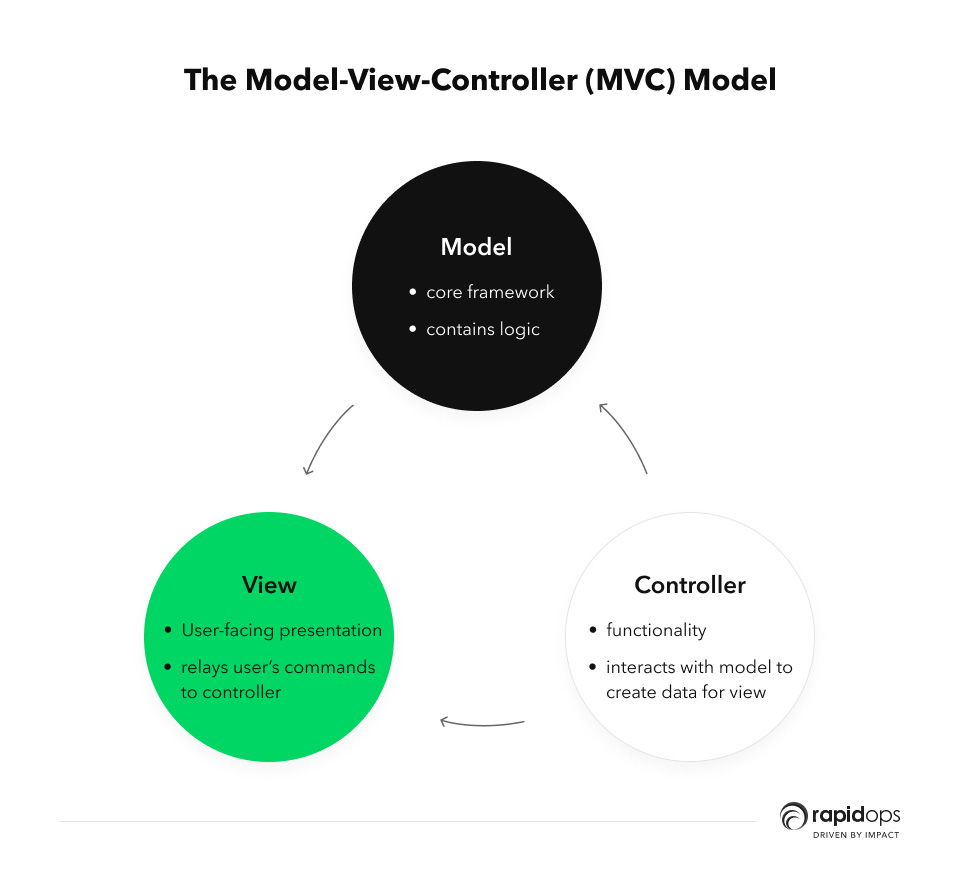
This model-view-controller model shows the decoupled core framework, its presentation, and its functionality. This microservice architecture is much faster and safer to update, reconfigure, and scale.
Headless CMS enables businesses to create, store, and display content independently of each other’s functionality. It is a content repository where developers can summon content as a service via API calls.
As customer demand calls for more robust and flexible content publishing, business owners must adapt to include advanced features that cater to modern communication needs.
By decoupling their content from design, they enable seamless experiences across various channels and devices. While a headless CMS primarily manages and delivers content without defining its presentation, integrating it with communication platforms can enhance user interactions.
For instance, leveraging additional technologies to enable customers to call a phone number directly from a computer is an example of how businesses can extend the capabilities of their content systems. This demonstrates the dynamic possibilities of combining a headless CMS with the right communication tools.
The benefits of a headless CMS are instant and powerful
- No need for implementing multiple parallel content management system instances. A single headless CMS can support both web and mobile digital channels.
- A product description content can automatically adapt to the publishing environment and optimize itself for online cataloging.
- The code and content are isolated in headless CMS, making things easier for content editors. They can freely take responsibility for the content without worrying about the code.
- Developers can utilize the latest tools and frameworks to transform the content experience on modern platforms. They can do so without being limited by a proprietary programming language or other limitations of a traditional CMS.
- Content pushed to various channels via APIs can be easily integrated, redirected, and distributed. This saves time and helps provide the best content-driven experiences across sites and apps.
When and where should headless CMS be used?
We laid down some of the questions at the start of this article. Now that we are moving further into the guide for implementing headless CMS let us answer a few. So, why might you need a headless CMS? Or when should business owners consider implementing headless CMS? Let’s have an in-depth look.
Flexible front-end
While traditional CMS systems organize content in biased web frameworks, this approach has its own drawbacks, as your business might be providing support to a variety of devices and customer touchpoints.
With a headless CMS, developers are free from traditionally complex CMS frameworks. Because the front-end app or website is decoupled from the content layer, developers need not worry about working with technologies they are not comfortable using.
Existing CMS platforms' front-end capabilities are limited, and while managing content, they govern how content gets displayed on the website. With rigid structures or templates, marketers, too, feel limited. This ultimately creates an unoptimized experience on some devices.
Today’s consumer market requires businesses to replace their monolithic websites. Fortunately, headless CMSs are being deployed with omnichannel and smoother digital experiences in mind.
Therefore, deploying or implementing a headless CMS will allow your marketers to get more options for engaging with customers and creating genuine demand for your products or services.
Creating a future-proof technology stack
Having a flexible, API-driven CMS allows your developers to switch between technologies seamlessly and stay future-proof. Most headless CMSs do not force developers into specific frameworks, which helps them create the best customer experience.
“If you are looking to future-proof decisions and are willing to invest to enjoy longer-term efficiencies, then investing in cutting-edge technology such as headless CMS is your best bet.” – Jayesh Mori, CEO, and co-founder, Rapidops
APIs are the most significant enabler of microservices architecture. This allows you to create components or services that are more accessible to replace or upgrade according to organizational needs. Such modularity decreases your back-end teams’ dependence on front-end engineers for changing themes or other presentations, which are major bottlenecks in traditional CMS platforms.
With headless CMS, you can be future-ready as they can readily support technologies that will be popular in the future. Many companies are already pushing content through the incorporation of
- IoT devices
- augmented reality
- virtual reality
- other cutting-edge technologies
Building your new headless CMS architecture around powerful APIs will make it compatible with upcoming technologies. This will also allow you to take advantage of unique audience segments, which means better scalability.
As such, content production for a diversified crowd and channel has become frequent. A headless CMS allows users to update content once and publish it on every channel. It reduces duplicate work and completely supports multiple touchpoints, eliminating the risk of out-of-sync content on other channels.
Once marketers can more efficiently support the omnichannel approach, they can start delivering content at scale and maintaining brand consistency. Brands can then easily reach a growing audience on various channels from a single repository.
Managing content without developers
Even though headless CMS has technical advantages that can steal the spotlight from developers for businesses, the most significant benefits are operational. Headless CMS platforms offer business value as they put marketers behind the wheel.
Marketers can independently manage, maintain, and evolve the content. This is an operational benefit for you as your developers will focus more on managing your product and service offerings.
A complex traditional CMS limits content marketers from creating and following up on tickets for updating content. This ticket is then triaged and updated in the next sprint cycle. Too much time-consuming, right?
Minor changes, such as updating inner images, changing banner images, or making grammatical changes, will take weeks vs. seconds with a headless CMS.
Use cases of headless CMS
Let’s look at some of the case scenarios where a business might want to implement headless CMS.
Headless CMS use case #1: Creating content is the main focus
With a daily content deadline, headless CMS becomes the optimal choice for you as it enables seamless content creation, management, and editing.
When content is stored inside a headless CMS, it is much easier to manage and integrate with other systems. Headless CMS is also better at handling integration with any front-end platform with the help of API calls.
Headless CMS use case #2: You want to improve the digital experience
Modern or traditional businesses might operate with legacy web and mobile applications that create customer journeys. For instance, a bank wants to grow its business by developing an end-to-end website for its personal and enterprise banking clients accessible via the web or mobile app.
Instead of spending thousands or millions of dollars to swap out their legacy systems with e-commerce applications or commercial CMS, they can go for headless CMS. This system will display banners, articles, and promotional offers to users within their existing app ecosystem.
Headless CMS use case #3: You want to reach new customers on emerging touchpoints
Over 83 million households were owning at least one smart device in 2019. Develop applications or other digital products that will create unique digital experiences for smart home devices with such a number. As smart home devices or similar products expand their reach, organizations will need a CMS to offer relevant content or even help users purchase these devices.
Headless CMS can enable such functionality by integrating content with these smart devices' underlying framework. For example, you can allow users to place orders using voice or automate powerful and sophisticated Alexa directly from an Amazon Echo device.
Concluding thoughts: Implementation of headless CMS allows seamless management of omnichannel digital experience
Whether you want to move to a headless CMS or not depends on whether your team will have more non-technical people handling the overall functionality of what goes into your website content. Such a decision also depends on whether you want to create an advanced user experience using specialized developers.
When handling more significant projects, prioritizing a unique user experience in diversified digital platforms with more complex features takes center stage. Headless CMS is the best-case scenario for you here.
When it comes to making decisions regarding adopting new technologies, moving away from legacy systems, or making organization-digitized changes, many organizations hold themselves back due to the unknown budget they might need to shell out.
Rapidops consults businesses from ideation to execution and even in the post-production or digital product delivery stage. With 200+ digital products catering to various industry verticals, Rapidops has proven itself the leader in developing outstanding product experiences for its clientele.
What’s Inside

Let’s build the next big thing!
Share your ideas and vision with us to explore your digital opportunities
Similar Stories
- Strategy
- undefined Mins
- February 2017

- Strategy
- 19 Mins
- August 2023


Receive articles like this in your mailbox
Sign up to get weekly insights & inspiration in your inbox.

